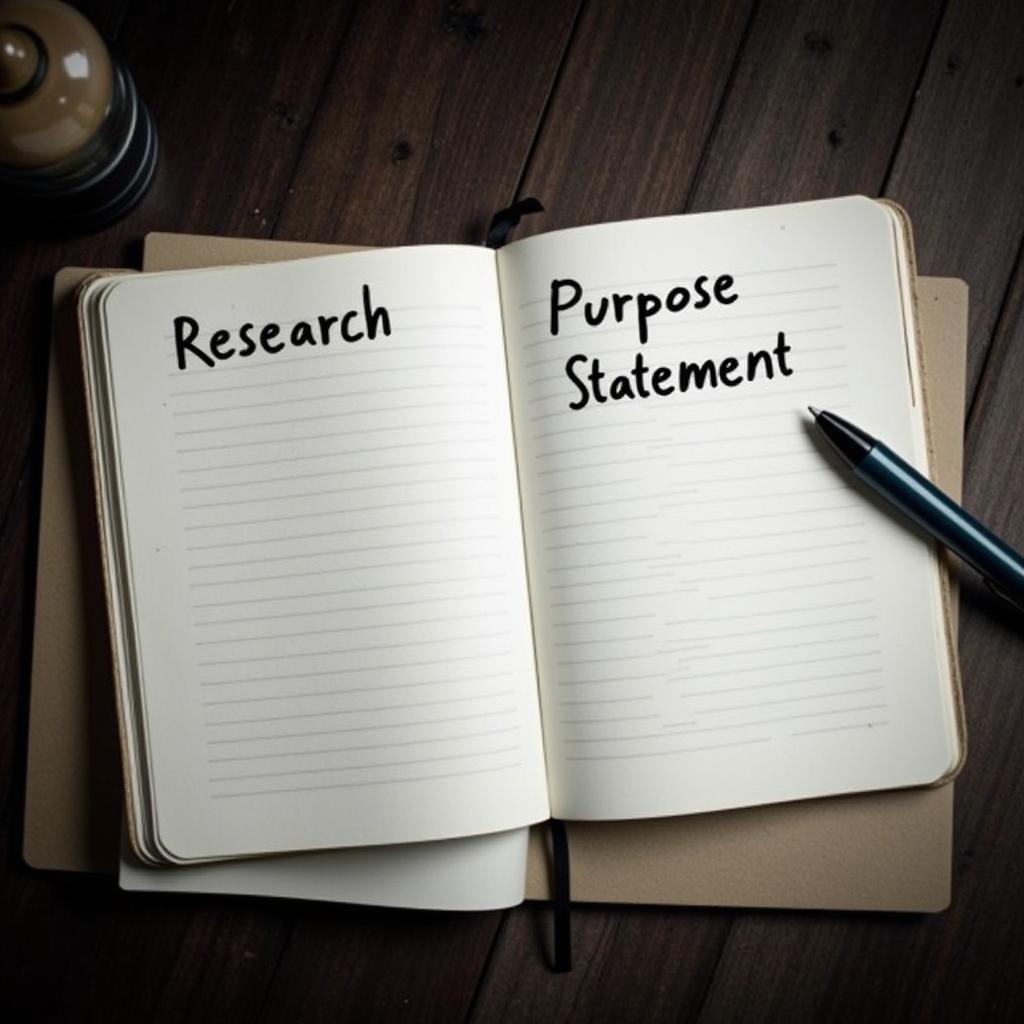A research purpose statement is the compass guiding your exploration into the unknown. Whether you’re investigating the spectral apparitions of haunted grounds or the unexplained energies of ancient artifacts, a clear and focused purpose statement is essential. It’s the foundation upon which your entire research project is built, providing direction and ensuring that every investigation, analysis, and conclusion aligns with your overarching goal.
 research purpose statement example
research purpose statement example
What Exactly is a Research Purpose Statement?
In the realm of paranormal research, a research purpose statement is a concise declaration outlining the specific goals you aim to achieve through your investigation. Think of it as the mission statement for your journey into the supernatural. It answers the fundamental question: Why are you conducting this research?
A well-crafted research purpose statement should be:
- Clear and concise: Avoid jargon and complex phrasing.
- Focused: Narrow down your scope to a specific phenomenon or question.
- Achievable: Ensure your objectives are realistic and attainable within your resources.
- Relevant: Your research should contribute to the existing body of knowledge within the paranormal field.
Why is a Strong Research Purpose Statement Important?
A robust purpose statement acts as a guiding light throughout your paranormal research journey. Here’s why it’s crucial:
- Provides Direction: It keeps your research focused, preventing you from veering off into irrelevant tangents.
- Attracts Interest: A compelling purpose statement can pique the curiosity of your audience, drawing them into your investigation.
- Shapes Methodology: Your research methods and data collection techniques will directly stem from your stated objectives.
- Justifies Effort: A clear purpose validates the time, resources, and energy invested in your paranormal exploration.
Research Purpose Statement Examples: Illuminating the Unexplained
Let’s shed some light on the concept by examining a few examples of research purpose statements within the context of paranormal research:
Example 1:
Research Purpose: To investigate the correlation between electromagnetic fluctuations and reported ghost sightings at the historical Blackwood Manor, with the aim of determining if EM anomalies can be used as a reliable indicator of spectral presence.
This statement clearly outlines the research question (correlation between EM fluctuations and ghost sightings), the location (Blackwood Manor), and the ultimate goal (determining if EM anomalies can indicate spectral presence).
Example 2:
Research Purpose: To analyze historical accounts and eyewitness testimonies of the Enfield Poltergeist case, employing content analysis techniques to identify patterns and discrepancies that might shed light on the authenticity of the paranormal events.
Here, the focus shifts to a specific case (Enfield Poltergeist). The statement highlights the research method (content analysis) and the desired outcome (uncovering patterns and discrepancies).
 research purpose statement paranormal investigation
research purpose statement paranormal investigation
Example 3:
Research Purpose: To conduct experimental EVP sessions at the purportedly haunted Waverly Hills Sanatorium, utilizing a variety of recording techniques and audio analysis software to attempt communication with residual energies and document any potential evidence of intelligent responses.
This statement focuses on a specific paranormal phenomenon (EVP) at a known location (Waverly Hills Sanatorium). It outlines the research methods (various recording techniques and audio analysis) and the intended outcome (communication with residual energies and documentation of intelligent responses).
Crafting Your Own Research Purpose Statement: A Step-by-Step Guide
Ready to embark on your own paranormal investigation? Here’s a step-by-step guide to crafting a compelling research purpose statement:
- Identify Your Area of Interest: What paranormal phenomenon intrigues you the most? EVPs? Ghost sightings? Psychokinesis?
- Narrow Your Focus: Ask a specific question about your chosen phenomenon. For example, instead of “Investigating ghosts,” consider “What environmental factors influence the manifestation of apparitions?”
- Define Your Objectives: What do you hope to achieve through your research? Do you want to prove or disprove a theory? Collect evidence? Analyze existing data?
- Consider Your Resources: Ensure your objectives are realistic and attainable with the time, equipment, and access you have available.
- Write a Clear and Concise Statement: Use strong verbs and precise language to articulate your research purpose in a single sentence, if possible.
Frequently Asked Questions About Research Purpose Statements:
Q: Can my research purpose statement evolve as my investigation progresses?
A: While it’s good to have a clear focus at the outset, your research purpose statement can adapt as you delve deeper into your investigation. You might uncover unexpected avenues or refine your objectives based on your findings.
Q: Do I need to include specific hypotheses in my research purpose statement?
A: While not always necessary, including hypotheses can strengthen your statement by outlining your initial assumptions and predictions. However, some paranormal research may focus on exploratory investigation without pre-defined hypotheses.
abstract examples for research papers
Conclusion: Embarking on a Journey of Discovery
In the world of Paranormal Research, where the veil between the known and unknown is thin, a clear research purpose statement serves as your compass and map. It guides your exploration, ensures your efforts are focused, and ultimately contributes to a greater understanding of the mysteries that lie beyond our current perception.